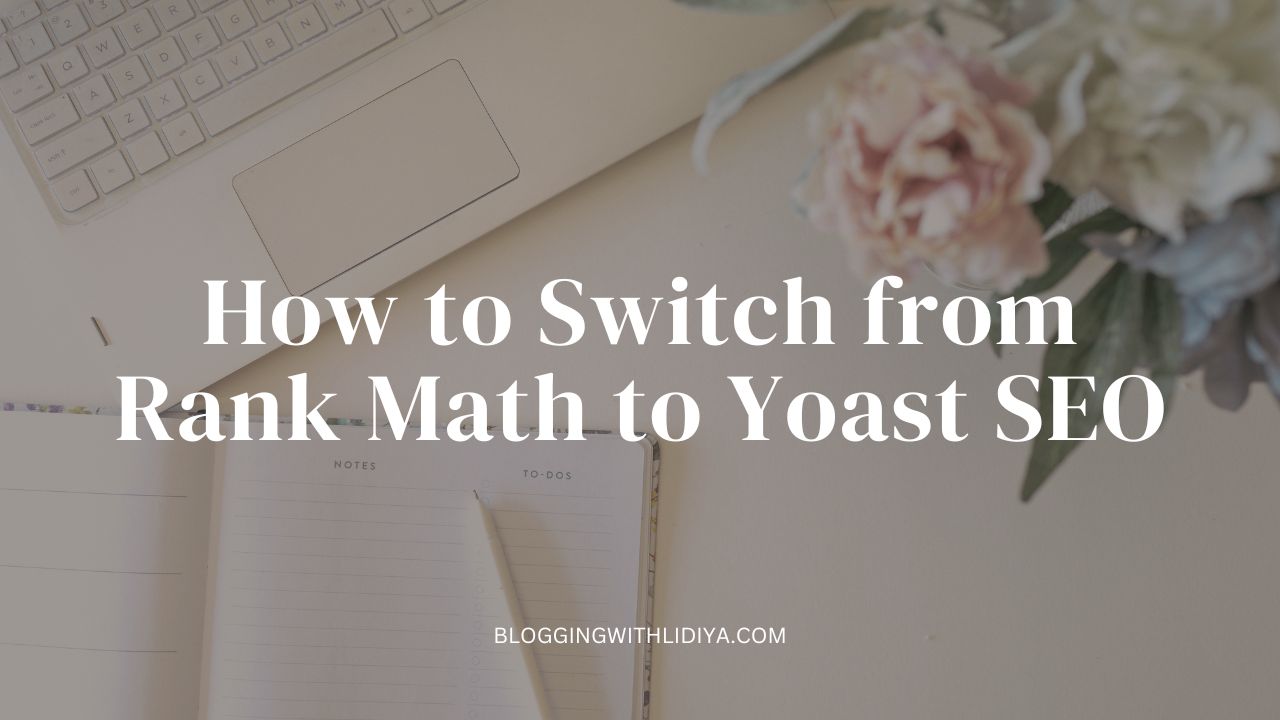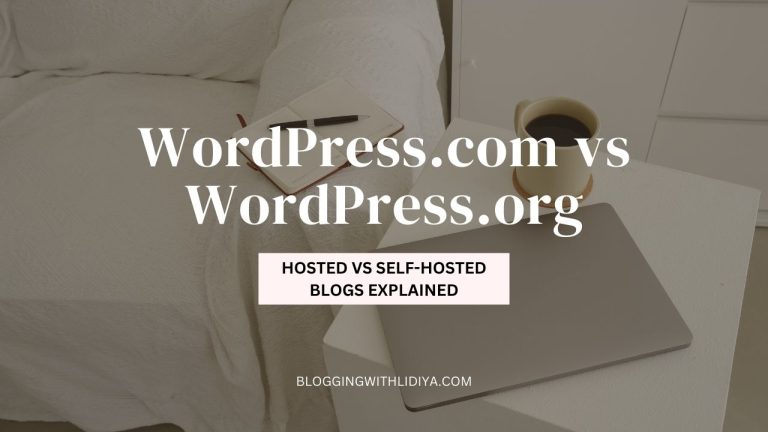How to Switch from Rank Math to Yoast SEO
Hey, blogging mommy.
Today I have another quick WordPress-related tutorial for you and it’s all about SEO plugins. And, in particular, the 2 most popular ones – Yoast SEO and Rank Math.
I’ve always used Yoast SEO for all my sites, but last year switched to Rank Math for my main site. I did it because it’s a more lightweight plugin, offers some pretty awesome features, and many SEO experts recommended it.
For the record, both of these do a great job, and Yoast SEO is often easier for beginners. So you definitely don’t need to switch, and you don’t need to choose one over the other. Do what’s right for you.
I was using Rank Math for half a year or so and really loved what it offers, but I noticed some issues with my sitemaps being indexed and updated. Not saying that’s from Rank Math, there can be many reasons. I did my research for it but ultimately, I couldn’t find a solution quickly enough. So I decided to switch back to Yoast SEO as I felt more comfortable with it.
So, if you’re doing the same (for whatever reason), here are the steps to make the transition super easy. And it’s also easy to switch from Yoast SEO to Rank Math, by the way, so no worries. Nothing is lost.
Switching from Rank Math to Yoast SEO
1. Do something about redirections.
I have many redirections on my main blog, and prior to Rank Math (which handles them very well), I was using another plugin just for that. It’s called Redirection.
So before disabling Rank Math, I installed it and went to the Import/Export feature in its settings. There you can directly import your redirects from existing plugins, and Rank Math should show as one of them.
If you don’t have any redirects or don’t even know what these are, skip this step.
2. Disable Rank Math.
Now, let’s disable your existing WordPress SEO plugin. Don’t delete it just yet, though, as we’ll need to import data from it.
3. Install and activate Yoast SEO.
4. Go to Yoast SEO > Tools.
There you can click the first option, Import and Export.

5. Import your data.
On the next page, click the third option: Import from other SEO plugins.
In Step 2, select Rank Math from the dropdown menu, and click import.

Keep in mind that the following won’t be imported:
- Your Rank Math Settings
- Schema Markup added to your posts
- Redirections created & active on your website (feature available only in Premium version of Yoast SEO).
6. Check if your data was imported correctly.
Go to a blog post that you’ve optimized with RankMath and see if the keyword and meta description you set for it are there.
Now, that didn’t really work for me the first time so I researched and tried other options.
That included activating Rank Math again (to try do it manually) only to find out that what’s exported isn’t in a format Yoast accepts.
Then I tried with a plugin (SEO Data Transporter) but it didn’t support Rank Math.
So I deactivated them, activated Yoast again, and tried the exact same thing I showed you above, and it worked this time.
So don’t give up if it doesn’t happen the first time.
Once you’ve made sure your focus keywords, SEO titles and descriptions have migrated to Yoast, you can move onto the next step.
7. First-time configuration.
Run the First-time configuration the tool offers. You’ll access it by going to Yoast > General. Just follow the steps.

It will take you through an SEO data optimization in the first step, filling in some more details about your site and brand, and adding your social profiles.
When you finish it, you’ll be able to see your content’s SEO performance at a glance.
8. Clean old data.
Now, go back to the Import and Export page (Yoast > Tools > Import and Export > Import from other SEO plugins) and let’s take the final step there. This is where we clean up the original data from Rank Math.
Select it from the dropdown menu and click ‘Clean up’.

9. Delete Rank Math.
Once you ensure everything’s working correctly, you can go ahead and delete Rank Math from your plugins.
10. Set up Yoast.
Finally, go back to Yoast and set it up (Yoast > Settings).
Once you do, there’s nothing else you need to do and you can move onto writing, publishing and optimizing your blog posts.
11. Had an HTML Sitemap?
One of the features Rank Math offered was creating an HTML sitemap for you, which is basically a list of all your posts and pages (with links). It’s user-friendly and a great way to display all your posts, and it fits well in your footer, for example. It’s also SEO-friendly.
New posts you publish are added to it automatically.
I had that and wanted to keep it. After disabling Rank Math, though, that page on my site was empty.
So just keep that in mind.
And that’s how you switch from Rank Math to Yoast SEO.
Any questions? Let me know in the comments below.







